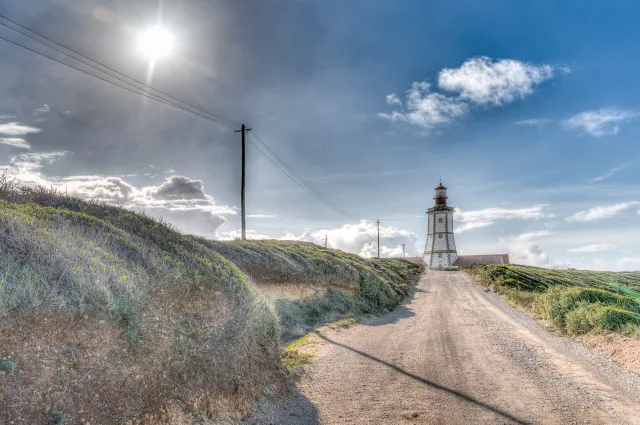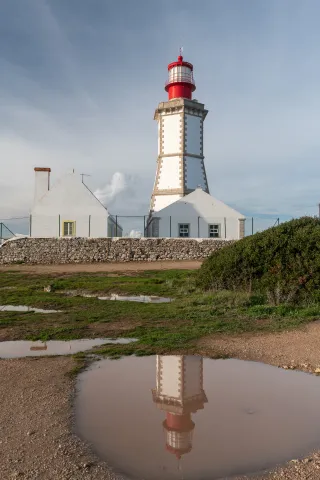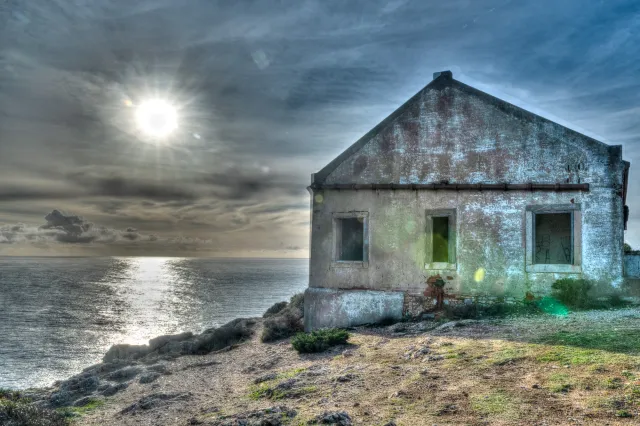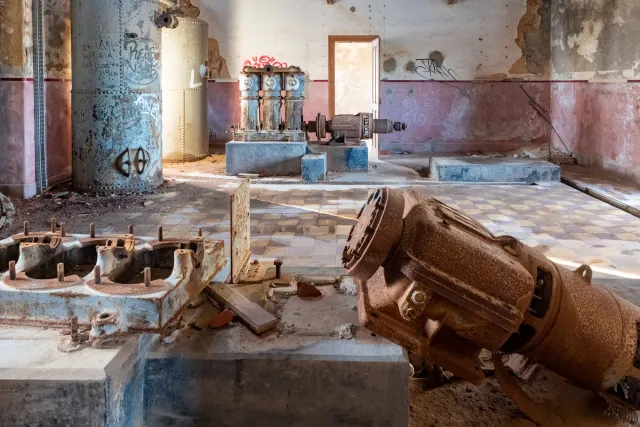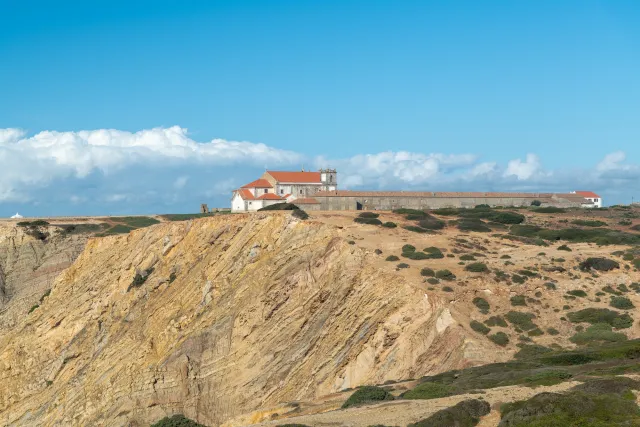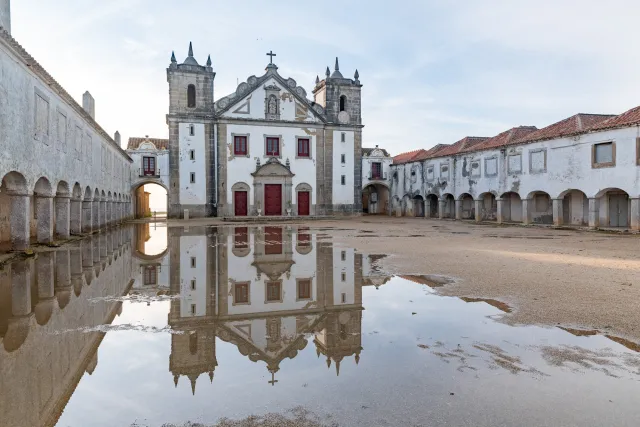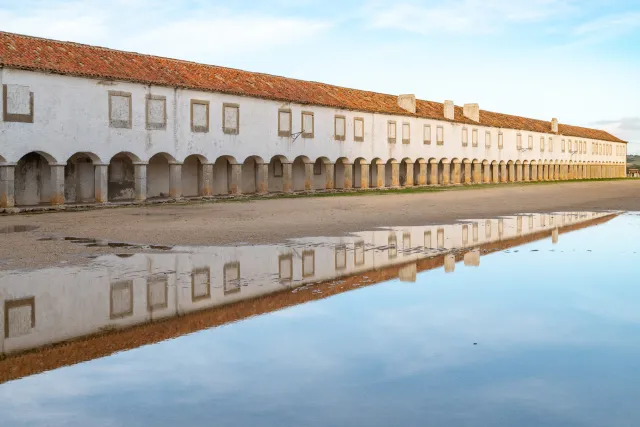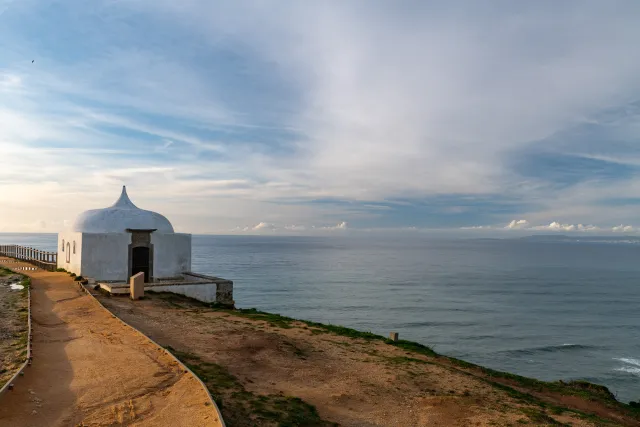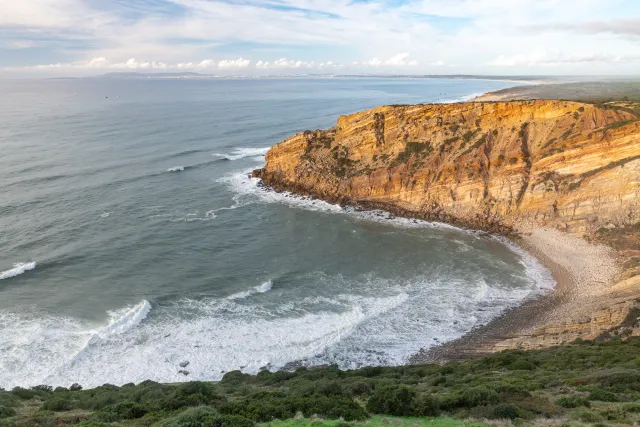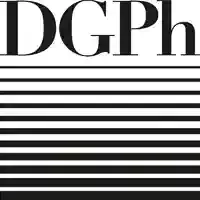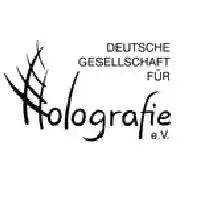The Cabo Espichel is located at the end of the southwestern headland of the Setubál peninsula. Since 1430 there is a lighthouse at Cabo Espichel (modernized in 1790), the red-white, 32-meter-high tower of Farol do Cabo Espichel. Its light extends almost 50 km out to the sea and has already saved some sailors from capsizing at the wild cape of the Costa Azul. The landscape is impressive - the white stripe of the surf separates the barren chalk cliffs from the blue-green ocean, where the sun leaves a bronze-colored stripe in the evening before sinking into the sea.
In 1701 King Peter II ordered the construction of the baroque church of Nossa Senhora do Cabo at the place of pilgrimage. Inside, the retable of the high altar in Portuguese Baroque style with the figure of Senhora do Cabo impresses. The ceiling painting was created in 1740 by the painter Lourenço da Cunha with impressive, perspective orientation. The 16th-century paintings in the sacristy are by Mestre da Lourinhã depicting St. James and St. Anthony.
Interesting in the monastery ensemble (Santuario) are also the pilgrim accommodations. These are the two long rows of small rooms, to the side of the church.
The small, square white chapel Ermida da Memória dates back to the 15th century. With its onion-shaped roof and 18th-century white and blue tiling, it perches on the edge of the cliff just above the place where Dinosurians left their footprints around 150 million years ago. Paleontologists at this cape enjoy the imprints of sauropod, theropod and ornithopods. An affiliated geocache shows you a special Lost Place, which can be found high above the cliffs.

